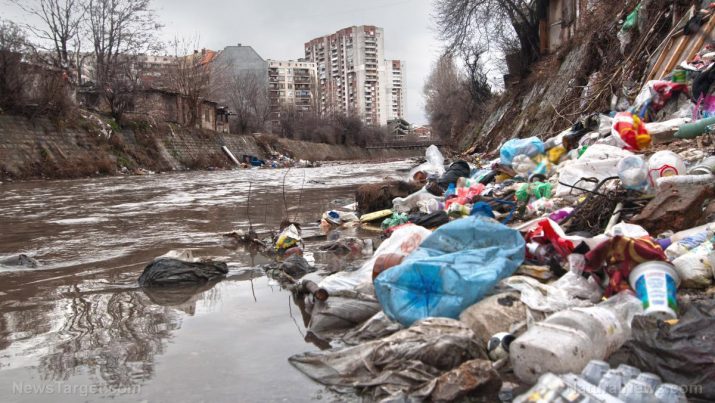
How do you dispose waste when SHTF? Sanitation strategies for preppers
Wednesday, January 13, 2021 by Virgilio Marin
http://www.naturalnewstips.com/2021-01-13-waste-disposal-strategies-for-preppers.html

Though you’ll likely be forced to forego a lot of creature comforts when SHTF, sanitation and hygiene should never be sacrificed – no matter the situation. It’s easy for diseases to spread due to improper waste disposal. And with the absence of healthcare institutions, you’ll be at greater risk of unwanted health outcomes if you don’t do your due diligence to avoid infection. The following waste disposal strategies will help you deal with SHTF sanitation. (h/t to PreppersWill.com)
Waste disposal strategies for preppers
The principle behind proper waste disposal is simple: You need to keep waste and pests away from food and water supplies. While that may seem like an easy task, garbage piles up quickly, leaving you with mountains of trash and not enough space to accommodate them.
Your main options for disposal are to burn, bury, bag and store them. Which of these works best depends on the type of garbage, so you need to segregate waste.
Burning
Burning could effectively eliminate garbage. The downside is that it releases enormous amounts of smoke that could be dangerous to health and the environment. In addition, not all household trash is combustible. Only a few items, like paper, leaves and dirty rags, can maintain the fire long enough to burn completely without an accelerant. Therefore, burn only combustible garbage and avoid burning items that may unleash chemicals into the air.
Burying
Burying is ideal if you’re disposing of leftover food and other biodegradable waste. Garbage of this kind could serve as a fertilizer especially if you’re growing your own food. An exposed pit, however, could attract flies and other pests, swarming your shelter and potentially contaminating your food. Therefore, you need an airtight cover to keep insects away.
Bagging
For non-liquid waste, such as paper, dirty rags and hand wipes, you can simply use a garbage bag or a sack. At some point, however, they will accumulate and you will need someplace to get rid of them. You can either bury, burn or reuse/recycle them.
For instance, you can use jars, plastic bottles and cans as waste containers for small pieces of garbage. You just need to keep the lid and seal it tightly with duct tape. (Related: Food waste being recycled to become consumer products.)
Storing in tanks
Storing waste in tanks is ideal if you’re dealing with human waste. Human waste disposal is tricky and could be disastrous if not handled properly. You could bag or bury human excreta, but when it comes down to it, having a septic tank or a cesspool is the most convenient and sanitary of all waste disposal methods. This, however, will require a lot of prepping as you will need to build an underground container and attach some pipes to it.
A cesspool, which is the forerunner of a septic tank, is a deep hole dug 10 to 15 feet into the earth. The walls are brick-lined while the bottom is covered with foot-thick layers of sand, gravel and rock. It’s sealed with an airtight cover to allow anaerobic bacteria to break down waste and keep surface water out.
A septic tank is harder and more expensive to build but offers more advantages. For one, it could last for a long time unlike a cesspool, which needs to be abandoned once it’s full. Most septic tanks have two chambers that filter waste before it gets routed to a nearby vitrification bed. The latter exposes the water to the air and sunlight, killing harmful bacteria.
Keep in mind that you would need to clean a septic tank once every three to five years to empty the sludge at the bottom of the chambers.
Proper waste disposal requires a lot of prepping, especially if you’re heading off into a prolonged survival situation. Consider these garbage disposal strategies when planning for SHTF.
Sources include:
Tagged Under: Tags: bug in, Human waste disposal, hygiene, preparedness, prepper, prepping, recycling, sanitation, Septic Tank, SHTF, survival, Waste disposal, waste segregation
RECENT ARTICLES


Why emergency preparedness must be a crucial part of your survival plan

Portable heater fuel: Is kerosene better than propane?

Survival first aid: How to treat snake bites

Understanding prepper speak: Important acronyms and definitions
By Zoey Sky
COPYRIGHT © 2017 NATURAL NEWS TIPS


